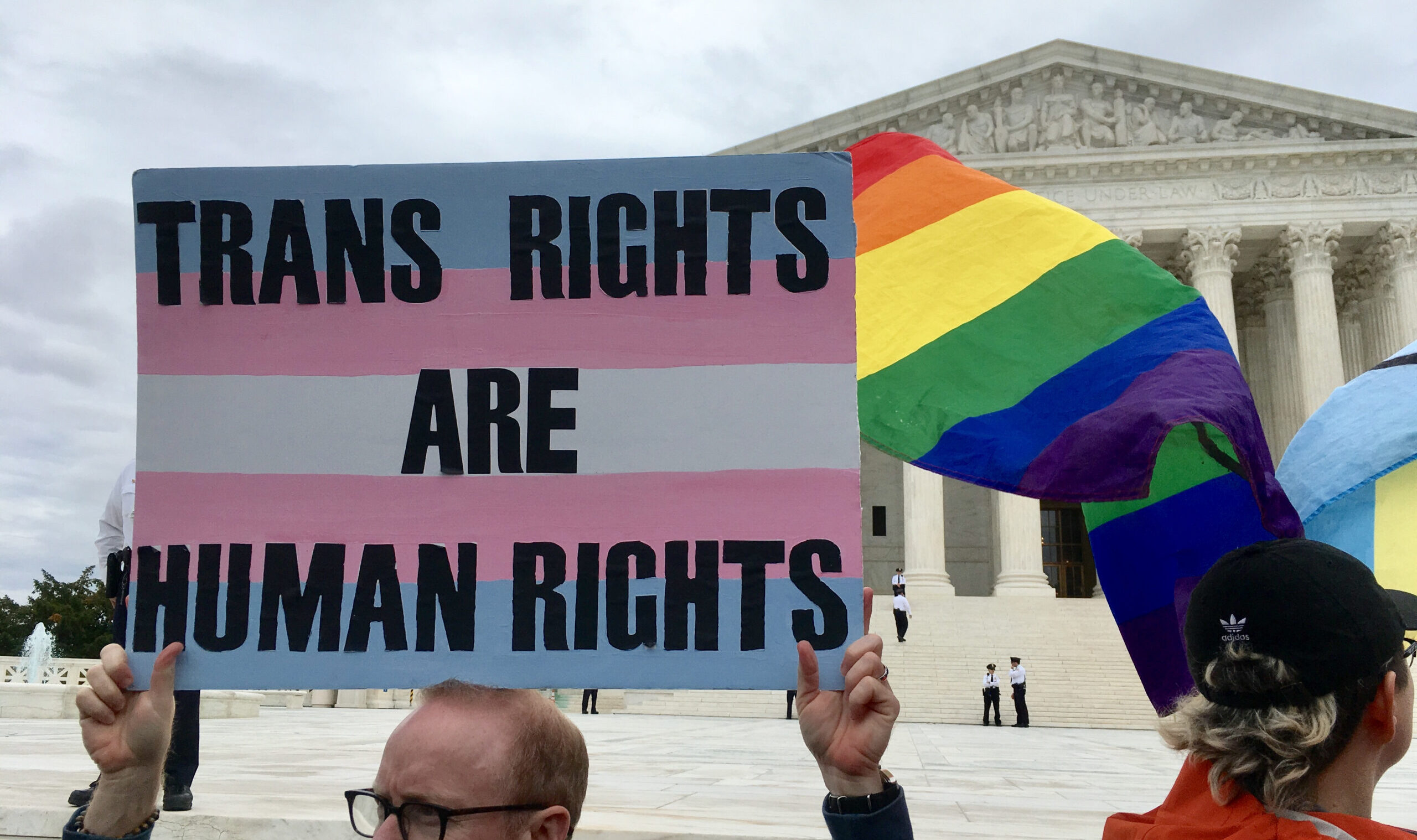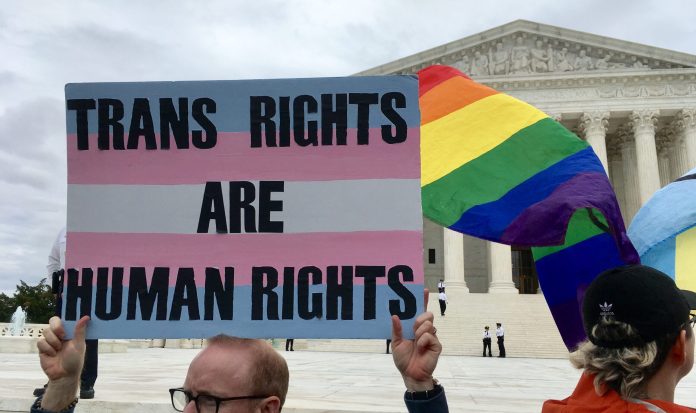
Supreme Court justices seldom get an opportunity to fix a botched decision. But as the Court takes up a Tennessee transgender case, Associate Justice Neil Gorsuch has that chance.
His fumble came four years ago, when the Court declared in Bostock v. Clayton County that Title VII of the Civil Rights Act of 1964, the federal law that forbids sex discrimination in employment, also bans employment discrimination based on transgender status.
Critics have charged that Gorsuch, an avid textualist and the author of the majority opinion, botched his “textual” analysis in that case.
But this is a mischaracterization. Instead, Gorsuch botched both the textual analysis and the philosophical analysis. While we agree with Associate Justice Samuel Alito, who wrote in his dissenting opinion that Gorsuch’s opinion was like a “pirate ship … sail[ing] under a textualist flag,” perhaps the bigger problem with that opinion is that Gorsuch and the justices who joined his opinion wrongly concluded that transgender status and sex are “inextricably” linked.
Since then, gender ideologues, activists, and the Biden-Harris administration have weaponized the Court’s holding to force women to share intimate spaces with biological males who identify as women; to force women to compete against those biological males in athletic competition; to compel health insurance plans to pay for gender transition treatments and surgeries; to mandate “preferred pronoun” usage; and to pursue a laundry list of other policies forcing everyday Americans to bend the knee to the new orthodoxy of gender ideology.
Even a textualist must sometimes answer philosophical questions, and when those answers are wrong, there are often profound societal consequences. Americans have painfully discovered that in the wake of Bostock.
So, what did Justice Gorsuch, the textualist, get wrong? After all, at no point did he conclude that sex and gender identity were the same thing. Here’s what happened.
Title VII forbids making certain employment decisions based on a person’s “sex.” Justice Gorsuch rightly assumed that “sex” refers to whether a person is biologically male or female. And he rightly recognized that “sex” and “transgender status” are two different things.
But Gorsuch concluded that transgender status was inextricably linked to sex. When noting an employee’s transgender status, an employer will also observe the employee’s underlying sex—something entirely different from how that employee chooses to self-identify. An employer who fires a person for being transgender thus fires a person for having traits—identities, attitudes, or behaviors—tolerated in one sex but not the other.
Gorsuch assumed that, all else being equal, the only difference between an employee who identifies as female but was assigned the male sex at birth and an employee who identifies as female and was assigned the female sex at birth is the employee’s sex at birth. If a male who dresses like a female and female who dresses like a female are equally suited to the job, but the male is fired for the way he dresses and identifies, then he was, Gorsuch concluded, terminated “because of… sex”—something Title VII expressly forbids.
But claiming to be female based solely on gender identity is not at all like claiming to be female based on sex, that is, based on biological reality. Even the National Institutes of Health explains that gender identity “is not necessarily visible to others,” but is wholly determined by how individuals perceive and interpret their “internal sense” of being male or female. In short, gender is cultural, sex is biological.
In reality, the label for one’s sex or gender identity might be the same—“female,” for example—but the term means entirely different things in different contexts.
Thus, assuming that an employee’s transgender status was, in fact, the basis for the termination, the employer fired the employee for having a trait not cognizable in either sex—a “gender identity” different from one’s underlying sex.
That’s not all. Gorsuch adopted a popular definition of transgender status, something that is rooted in the new and trendy gender ideology, but is incorrect. In saying that sex and gender identity align, Gorsuch may as well have said apples and bananas are the same because they are both fruits. Because sex and gender identity are fundamentally different, they cannot be compared to determine whether they align or not.
If that were not enough, Gorsuch also incorrectly referred to sex as being “assigned” and “identified with.” It is neither. One’s sex objectively exists, whether it is recognized or not.
By accepting the gender juggernaut’s definition of transgender status, something that conflates sex and gender identity and presumes that sex is either assigned or identified with, Gorsuch bought into a way of thinking about reproductive, bodily, and biological reality that has set the culture on a path to disaster.
That literalist approach was precisely the basis for Associate Justice Brett Kavanaugh’s dissent in Bostock. To his mind, Gorsuch got lost in the literal meaning of the text but failed to account for the plain and ordinary meaning of Title VII when read as a whole at the time it was adopted.
Gender activists, progressive politicians in Washington, D.C., and cultural elites have used Bostock as the basis of their argument that any law banning sex discrimination also bans transgender status discrimination—something that flies in the face of Bostock’s very limited holding, and something that Justice Alito predicted would be a natural consequence of the Court’s ruling in his blistering dissent.
Thankfully, the Supreme Court has, at least thus far, unanimously rejected that argument within the context of Title IX of the Education Amendments of 1972—the law that bars sex discrimination in federally funded education programs. Title IX permits separate sports teams, bathrooms, locker rooms, and housing accommodations for males and females, so long as both sexes enjoy equal educational opportunities.
When the Biden-Harris administration reinterpreted Title IX to mandate nondiscrimination based on gender identity by way of a federal rule finalized and published in April of this year, several states were quick to sue. The Supreme Court unanimously agreed in a per curiam (that is, unsigned) order denying the Biden administration’s request to lift a lower court injunction on its newly minted rule.
Now, however, the Court has the chance to repudiate gender ideology wholesale. The Court has decided to hear United States v. Skrmetti, a case in which three minors, their parents, a physician, and the Biden-Harris administration are challenging a Tennessee law that bans transgender medical treatments and surgeries for minors. They claim that the law unconstitutionally discriminates based on “transgender status” in violation of the Constitution’s Equal Protection Clause.
Subscribe Today
Get daily emails in your inbox
As the challengers frame it, under the Tennessee law, a minor whose sex is male and who identifies as male can get testosterone treatments, but a minor whose sex is female but who identifies as male cannot. Thus, discrimination.
The Court should reject this argument by recognizing that a person who claims to be female based solely on gender identity is not the same as a person who claims to be female based on sex, that is, based on biological reality. In other words, a person of the female sex is not the same as a person who identifies as female based solely on his self-described gender identity.
The Court should also dispense with the language of gender ideology by dropping terms such as “assigning” or “identifying as” a given sex. For millennia, infants have been immediately recognized at birth as being one sex or the other, save for exceedingly rare incidents of sexual development disorders. Short of that, the contagion of gender identity is a poison of relatively nascent propagation. The Supreme Court has the chance to fix a four-year-old mistake, limit the progressive Left’s ongoing effort to expand Bostock’s reach, and recognize (and thereby protect) biological reality while it does so. Let’s hope at least five justices are courageous enough to do just that.


